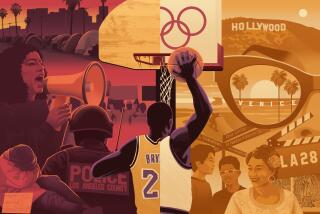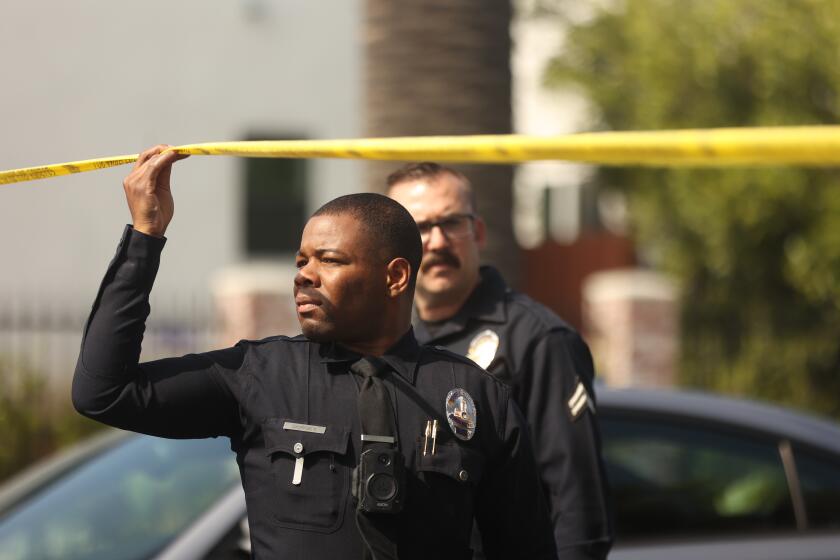LOS ANGELES : A Way to Racial Peace: Community Leaders
- Share via
Los Angeles remains racially tense. But the reason isn’t racism. It’s the anger that results from a lack of empowerment. Indeed, the real danger today is that a sense of lost empowerment is felt everywhere, including on the wealthier, mostly white Westside.
To many, the strain between Mayor Richard Riordan and the city’s black leadership typifies how little has been done since the 1992 riots to make racial peace. But rocky as their relationship is, it suggests a way to reduce racial tension throughout the city.
The rift between the mayor and such black leaders as Councilman Mark Ridley-Thomas derives, ironically enough, from the black community having a recognized leadership core with a clear voice. Almost everyone agrees on the causes of the underlying tension, but Riordan does not recognize that black leaders like Ridley-Thomas are the people with whom he must establish a collaborative relationship. When the mayor takes that step, and when the black leadership realizes that the constant bickering is pushing the city closer to a racial incident, the communication could begin the healing and highlight an important lesson. Making racial peace among the city’s diverse communities first requires peace among their leaders.
The African American community is one of the few in the city that has leaders who can speak for it. The Jewish community, along with the Chinese community, also have recognized leaders who can be said to represent their constituencies’ interests. And to the extent that religious denominations make up communities, there are priests, rabbis and pastors to lead them, as well as the Council of Religious Leaders and the Interfaith Coalition to Heal L.A., the only grass-roots organization in the city that reaches out to all religious leaders.
But everyone else is either unable to sustain the organizations necessary to develop leaders or are so saturated with organizations that no one can speak for the larger community. There are more organizations in the Korean American community of Los Angeles, for example, than any other ethnic group, but there is no recognized cadre of Korean American leaders. The city’s Filipino community--as large or larger than the Chinese--has few organizations and none of them truly speak for the whole. The immigrant Mexican American community maintains more organizations that focus on their home villages than anything else.
The nature of a community’s organizations--and its leaders--determine whether that community can work with others. The traditional coalition between African Americans and Jews--a coalition strained at times, especially now, but still continuing in the African American/Jewish Leadership Connection--exists because leaders of the two communities can meet and work on the problems they face. It is more difficult for them to create similar connections with other communities. Perhaps much harder, but it needs to be done.
The kind of racial peace Los Angeles needs if it is to become a model of how to live with diversity--a necessary condition if the city is to take its place as the hub of the Pacific Rim--is more than a truce between factions. It needs a peace founded on the collaboration of leaders who are recognized and respected as representatives of their communities, both at home and in the larger city. The respect that flows from such collaboration will encourage the development of a civic culture in which all the city’s communities will feel part of a larger whole.
Developing the local leadership on which to build a city identity is probably the most difficult task facing every urban area. For years, scholars have been talking about declining participation in traditional middle-class civic associations, and what that means for confidence in societal institutions. It is a trend that must be reversed.
The Multicultural Collaborative, a group born after the 1992 riots, recently issued a report calling for greater financial support for the city’s and county’s human rights commissions and for public officials and community leaders to learn how to better resolve disputes. The issue of empowerment also needs to be taken up in a way that focuses on neighborhood associations that encourage people to solve their own problems. There are a great many such efforts scattered around the city, but they need more support--and they need to play a more meaningful role. Councilman Joel Wachs advocates a devolution of power to neighborhood associations, a principle that should be incorporated in any Charter reform.
The best hope for racial peace lies in nurturing leaders at the community level. This will make it possible to build bridges among all communities and restore that sense of empowerment that has been battered by hard times.*
More to Read
Sign up for Essential California
The most important California stories and recommendations in your inbox every morning.
You may occasionally receive promotional content from the Los Angeles Times.













